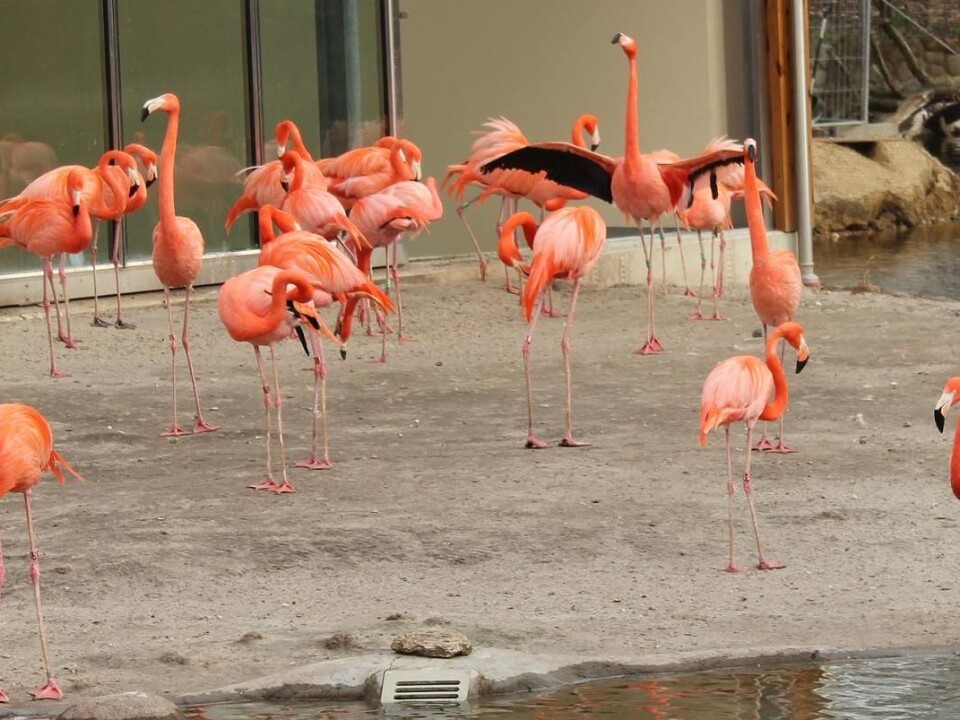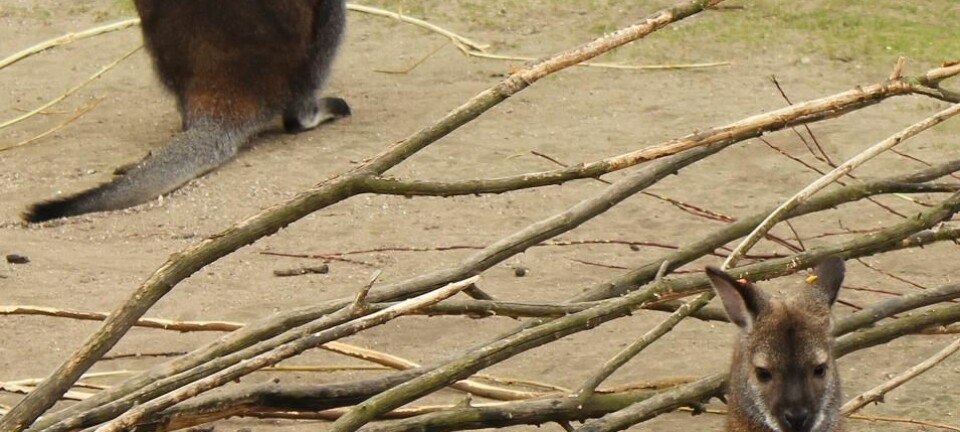
Mystery: captivity damages flamingo feet
It has long been a mystery why flamingos in captivity suffer foot lesions. A Danish study now claims to have solved a part of this mystery.
The animal world is filled with mysteries. One mystery that has bewildered animal keepers, veterinarians and zoologists for years is that the stunning pink flamingos injure their feet when in captivity.
Veterinarian Adriana Nielsen, in collaboration with Copenhagen Zoo, has taken a closer look at this mystery.
Three years ago she wrote a thesis about foot lesions in captive flamingos. The thesis, which was published as a scientific article, highlighted the extent of the problem. Later this year, Nielsen will publish another article, which aims to uncover a bit more of this mystery.
Her research is based on pictures of 854 flamingos’ feet from zoos around Europe and the US. It turned out that all the birds had foot injuries of various sorts, which are not found in the wild.

“We found four different types of foot injury in our study,” says Nielsen. “In many cases, it was merely a case of thickened skin, which doesn’t seem to bother the birds much. But actual foot problems such as cracks and lumps also proved very common.”
Four types of flamingo foot lesion
The flamingos’ foot lesions can be divided into four types:
- Thickened skin – also known as hyperkeratosis. Relatively benign. A precursor to the other lesions (100% of the examined flamingos affected)
- Fissures. They emerge when hard skin becomes so dry that it cracks and the skin is so thick that it doesn’t heal. The fissures can be very deep. When flamingos limp, they usually have fissures. Humans can also get these fissures and they are very painful (87% of the examined flamingos affected)
- Bumblefoot. This is a big problem in birds of prey, penguins and in poultry production (17% affected)
- Papillomatous growth. This causes cauliflower-like growths on the feet, which is actually scar tissue that grows wild. In other animals, for example chickens, it looks as if it’s a virus doing the damage because the chickens walk around in dirt (46% affected)
The examined flamingo feet were compared to a few wild flamingos. Here there were no signs of foot lesions; not even thickened skin, which all the captive flamingos had.
Concrete damages flamingo feet

It’s long been known that captive flamingos have bad feed. But Nielsen’s study is the first to uncover the extent and the possible causes of the problem.
The conclusions in her two scientific articles on the subject are very clear:
The first part of the study showed that foot lesions are extremely common in the 20 zoos she has studied.
“The second part showed that the prevalence of the various types of foot lesions is correlated with what surface the flamingos walk on,” says Nielsen.
“We found four different types of foot injury in our study. In many cases, it was merely a case of thickened skin, which doesn’t seem to bother the birds much. But actual foot problems such as cracks and lumps also proved very common.
Adriana Nielsen
The pink birds should ideally avoid concrete surfaces – also in ponds and lakes. In contrast, sand appears to have a protective effect.
The climate and varying temperatures are also thought to play a part:
”We found that flamingos in indoor facilities have a greater number of lesions, and the lesions are more advanced than on flamingos that live outdoors. Moreover, flamingos living outdoors in colder climates experience greater problems with certain types of lesions than those living in warmer climates.”
Although Nielsen has discovered correlations between temperatures and climate and bad feet, she cannot say precisely why it has this effect on the flamingos.
A problem for the birds and the zoos
There may be several causes involved in these foot lesions, but knowing which surfaces are good or bad for the flamingo’s feet helps us to at least reduce the problem.
Adriana Nielsen
It is of course not easy to create high temperatures outside – especially when you operate a zoo under Danish skies.
Zoologist and veterinarian at Copenhagen Zoo Mads Bertelsen, who has played a part in the examination of the flamingo feet, says that scientists have yet to figure out how having bad feet affects the flamingos.
”The birds appear to be doing fine. It’s not as if they can’t walk or have trouble moving around,” he says.
“But it’s hard to imagine that this won’t become a problem for the flamingos.”
In the zoo's new aviary for flamingos, staff members have tried to accommodate the flamingos’ needs, for example by letting them strut around just as they wish and letting them decide how long they want to be indoors.
Despite this, the flamingos are still experiencing problems with their feet. It could be because of the climate or that the cold Danish weather freezes the birds’ feet.
Mystery not fully solved
Although we now have a clearer understanding of what the flamingo’s feet can and cannot tolerate, the mystery hasn’t been completely solved. In Switzerland, a research team is currently investigating whether the lesions could be caused by bacteria or viruses.
Nielsen hopes her study will increase the focus on some of the elements that create problems for the flamingos’ feet.
”There may be several causes involved in these foot lesions, but knowing which surfaces are good or bad for the flamingo’s feet helps us to at least reduce the problem,” she says.
The scientific article ‘Risk factors for foot lesions in captive flamingos (Phoenicopteridae)’, about possible causes of flamingo foot lesions, has been approved and will be published within the next month in the Journal of Zoo and Wildlife Medicine.
------------------------------
Read this article in Danish at videnskab.dk
Translated by: Dann Vinther













